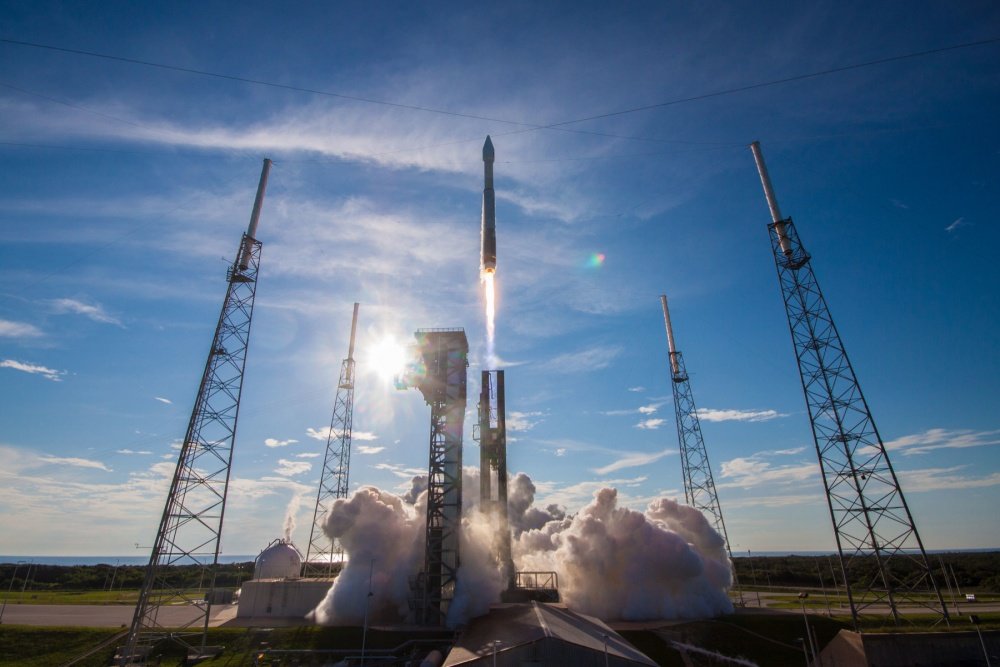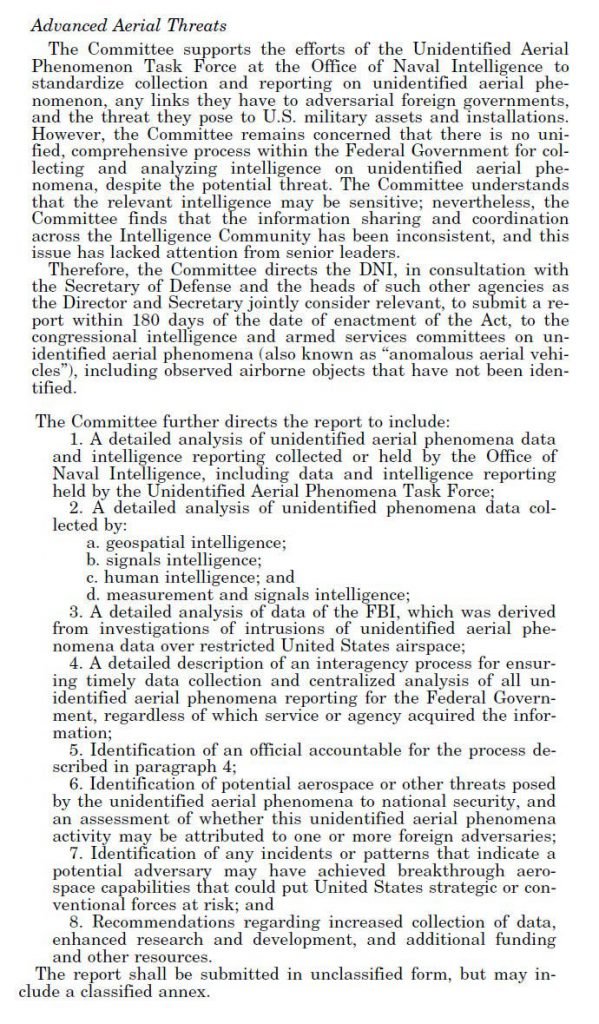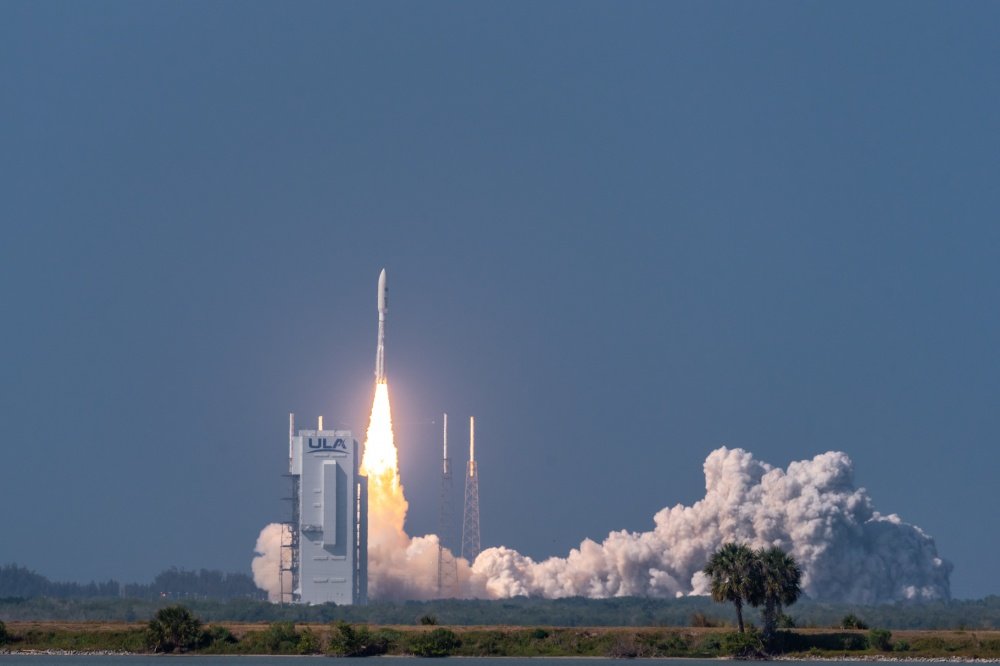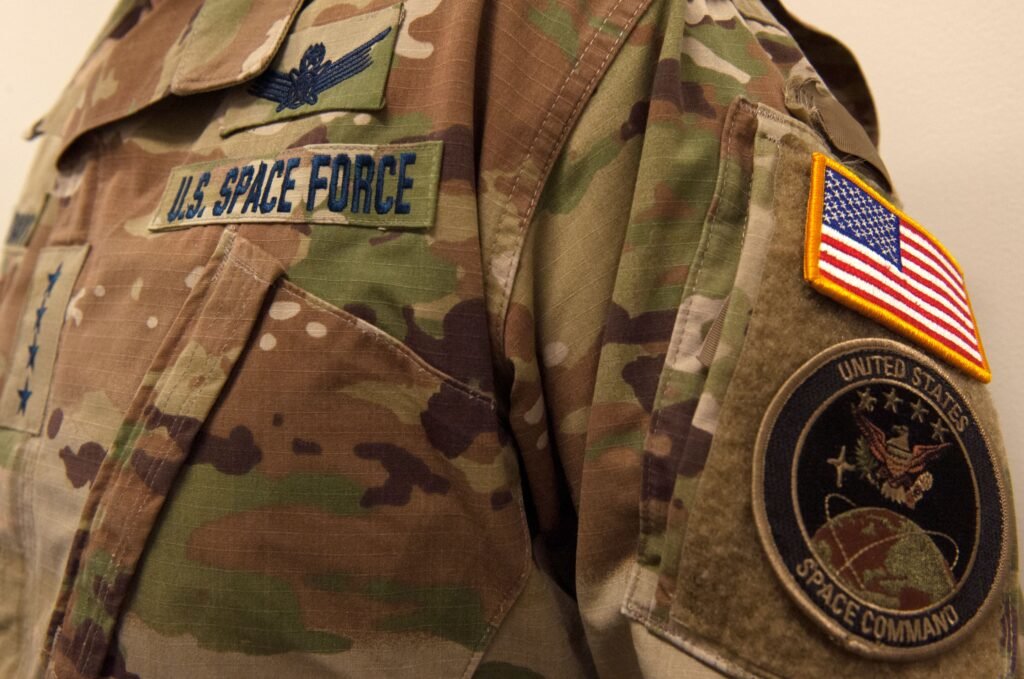Senate’s UFO Inquiry Highlights Washington’s Worries About ‘Doomsday’ Weapons

The 45th Space Wing supported United Launch Alliance’s launch of NASA’s Tracking and Data Relay Satellite-M (TDRS-M) Aug. 18, 2017 from Space Launch Complex-41 Cape Canaveral Air Force Station, Fla. Courtesy photo/United Launch Alliance.
In April, the Department of Defense released three videos taken by U.S. Navy pilots showing what the military defines as unexplainable aerial phenomena, or UAPs — more commonly known in civilian vernacular as unidentified flying objects, or UFOs.
The Pentagon videos clearly show the objects flying in unusual ways, and the audio includes the pilots’ puzzled and astounded reactions, including:
“What the [expletive] is that?”
“There’s a whole fleet of them…my gosh.”
“Look at that thing, dude.”
“That’s hauling ass, dude…look at that thing…it’s rotating.”
“Wow, what is that man?”
“Look at it fly [laughing].”
Naturally, the revelation of these unexplained encounters sparked speculations in some quarters about the possibility of extraterrestrial life operating aerial vehicles in Earth’s atmosphere. Yet, when it comes to so-called UAPs, lawmakers in Washington have more earthbound concerns.
As China and Russia increasingly militarize space, and as Russia develops a new arsenal of high-tech “doomsday” weapons, there is mounting concern in Washington that these seemingly unexplainable aerial encounters could, in fact, be evidence of America’s adversaries putting their advanced new weapons into action — potentially over U.S. soil.
As a result, a group of U.S. senators has drafted an order for the Director of National Intelligence to report to Congress about what UAP encounters have already been recorded and how that information is shared among U.S. agencies. The Senate Select Committee on Intelligence made the request in a report, which was included in the Intelligence Authorization Act for Fiscal Year 2021.
The report calls for a standardized method of collecting data on UAPs and “any links they have to adversarial governments, and the threat they pose to U.S. military assets and installations.”
The report also calls for the Director of National Intelligence, or DNI, to prepare a report for Congress on the sum total of reported UAPs. Based on information included in the report, the Office of Naval Intelligence maintains an Unidentified Aerial Phenomenon Task Force. That naval task force appears to be the nexus for America’s collation of reports of UAP sightings — comprising data from military branches, intelligence agencies, and the FBI.

The report instructs the DNI to report to Congress “any incidents or patterns that indicate a potential adversary may have achieved breakthrough aerospace capabilities that could put United States strategic or conventional forces at risk.”
While the Senate report marks a major step in congressional oversight of America’s UAP sightings, the Pentagon and federal law enforcement have been alert to the threat for years.
In December 2017, the New York Times reported on the Pentagon’s Advanced Aerospace Threat Identification Program, which reportedly collected reports of UAPs from 2008 until 2012. And over the past two years, the FBI was reportedly tapped to help investigate a spate of UAP reports in Colorado and Nebraska. Some of those UAP sightings occurred near U.S. Air Force installations and were subsequently investigated by security forces at F.E. Warren Air Force Base in Wyoming.
F.E. Warren is a strategic missile base and home to the 90th Missile Wing, which operates some 150 Minuteman III intercontinental ballistic missiles, which are armed with nuclear warheads. Those missiles are on 24/7 alert, 365 days a year, according to the U.S. Air Force.
Following the breakdown of the Cold War-era Intermediate-Range Nuclear Forces Treaty between the United States and Russia last year, and with Moscow and Washington increasingly at loggerheads over a broad gamut of geopolitical issues, Russian President Vladimir Putin has embarked his country’s military on a crash-course program to develop new so-called doomsday weapons.

The 9M730 Burevestnik — known as the “Skyfall” among NATO militaries — is a nuclear-powered, nuclear-armed cruise missile with virtually unlimited range.
Apart from the Burevestnik, in March 2018 Putin unveiled other new weapons that he touted would be able to defeat U.S. missile defense systems. Among those was the Avangard hypersonic vehicle, supposedly capable of flying at Mach 27. The Avangard reportedly went operational in December.
Russia is also reportedly developing a nuclear-powered underwater drone — the “Poseidon” — that will creep up to an adversary’s coast, detonate a nuclear weapon, and create a 500-meter, or 1,640-foot, tsunami.
According to some scientific journal reports, Russia may also be resurrecting some Soviet-era antisatellite missile programs, particularly one missile known as Kontakt, which was meant to be fired from a MiG-31D fighter.
Whereas the Soviet-era Kontakt system comprised a kinetic weapon intended to literally smash into U.S. satellites to destroy them, the contemporary Russian program will likely carry a payload of micro “interceptor” satellites that can effectively ambush enemy satellites.

The recent creation of the U.S. Space Force reflects the novel threats the U.S. now faces from its adversaries in space.
On June 23, China successfully launched an unmanned probe bound for Mars, underscoring Beijing’s increased interest in its space program. That same day, the U.S. Space Force announced that on July 15 Russia had tested a new antisatellite weapon.
According to a Space Force statement, a Russian satellite released an object that moved “in proximity” to another Russian satellite. Based on the object’s trajectory, Space Force officials said it was likely a weapon rather than a so-called inspection satellite.
That test was “another example that the threats to U.S. and Allied space systems are real, serious and increasing,” the Space Force said in a release.
“This is further evidence of Russia’s continuing efforts to develop and test space-based systems, and consistent with the Kremlin’s published military doctrine to employ weapons that hold U.S. and allied space assets at risk,” said General John Raymond, commander of U.S. Space Command and U.S. Space Force chief of space operations, in the release.

BRCC and Bad Moon Print Press team up for an exclusive, limited-edition T-shirt design!
BRCC partners with Team Room Design for an exclusive T-shirt release!
Thirty Seconds Out has partnered with BRCC for an exclusive shirt design invoking the God of Winter.
Lucas O'Hara of Grizzly Forge has teamed up with BRCC for a badass, exclusive Shirt Club T-shirt design featuring his most popular knife and tiomahawk.
Coffee or Die sits down with one of the graphic designers behind Black Rifle Coffee's signature look and vibe.
Biden will award the Medal of Honor to a Vietnam War Army helicopter pilot who risked his life to save a reconnaissance team from almost certain death.
Ever wonder how much Jack Mandaville would f*ck sh*t up if he went back in time? The American Revolution didn't even see him coming.
A nearly 200-year-old West Point time capsule that at first appeared to yield little more than dust contains hidden treasure, the US Military Academy said.












